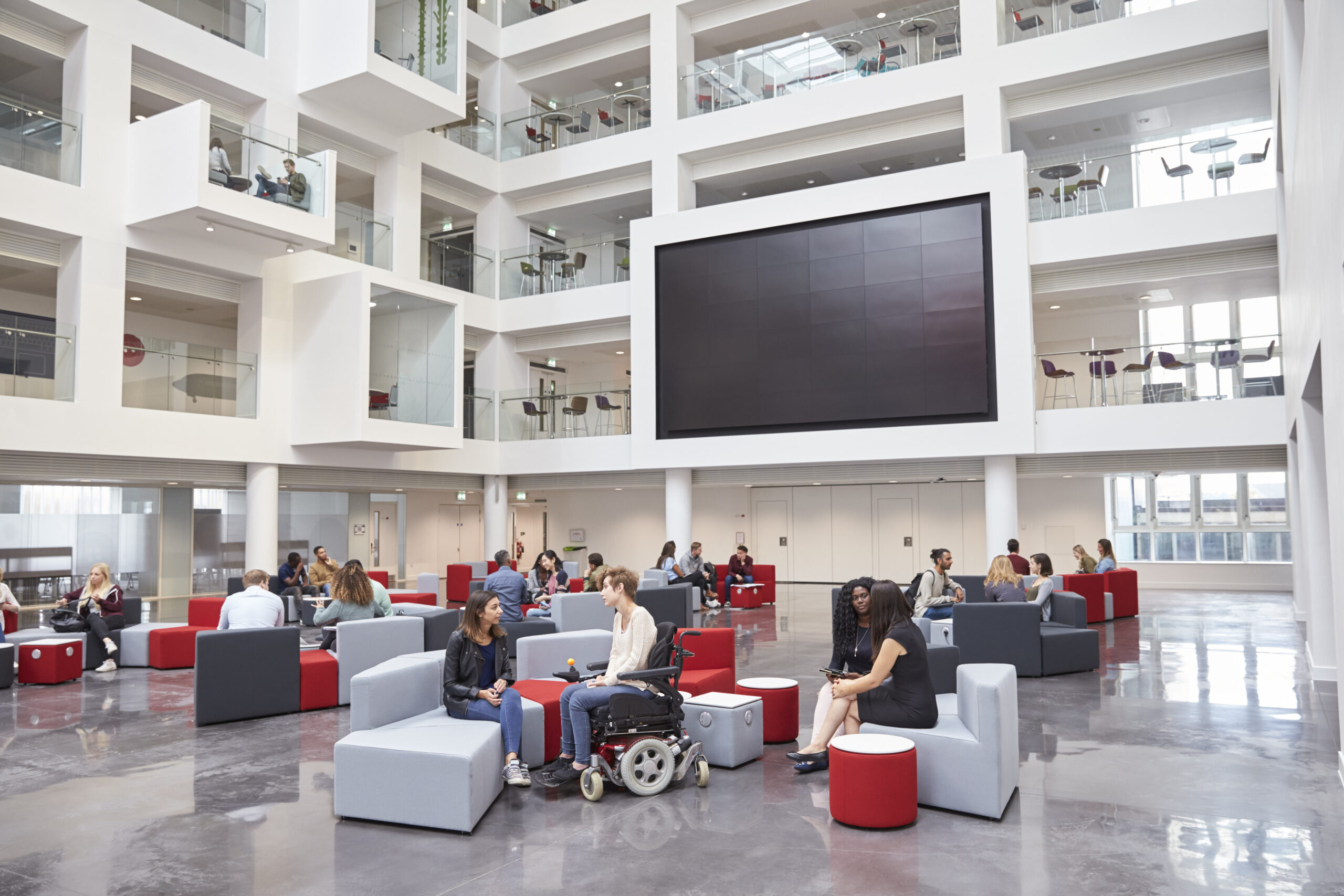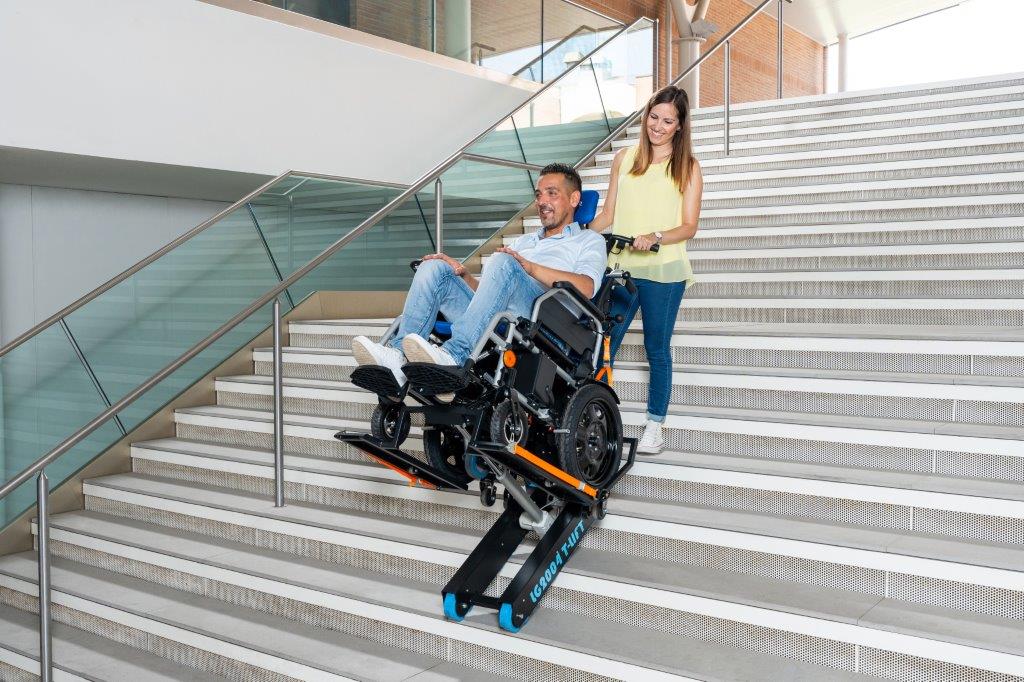Top 3 Mistakes Facilities Managers Make When Choosing Evacuation Equipment And how to avoid them…

Accessibility Audits: How Universities Can Assess and Improve Their Inclusivity
Creating an inclusive environment is fundamental for universities striving to accommodate students, staff, and visitors of all abilities.
An accessibility audit is a vital first step toward identifying barriers and implementing improvements. Let’s look at some of the key steps involved in conducting accessibility audits and fostering inclusivity in higher education.
Understanding the Purpose of an Accessibility Audit
An accessibility audit evaluates a university’s facilities, services, and programs to ensure compliance with legal requirements and addresses the needs of individuals with disabilities.
The goal is to go beyond meeting minimum standards and create an environment where everyone can thrive, helping to identify physical and procedural barriers, evaluating the effectiveness of current accessibility measures, and to develop actionable recommendations for improvement.
Assembling a Multidisciplinary Audit Team
An effective accessibility audit requires input from a variety of perspectives to be as rounded as possible.
Where feasible, the team should include facilities management staff, IT specialists, disability services coordinators, and external accessibility consultants.
Another important aspect is to involve students, staff, and faculty with disabilities who can provide invaluable insights into the lived experiences of navigating the campus.
The team can then initially perform these tasks to get started:
- Gather relevant information: Including campus maps, building layouts, and existing accessibility policies.
- Review existing documentation: Review compliance documentation and collecting feedback from individuals with disabilities through surveys or focus groups.
Assessing Physical Accessibility
Evaluating the physical environment is a key component of the audit to examining buildings and facilities to ensure entrances are wheelchair accessible.
- Are elevators functional and do classrooms and libraries provide adequate space for mobility devices is a must?
- Are there accessible restrooms that include features such as grab bars and ample turning space?
- Do outdoor spaces include pathways and signage to ensure they are clear, level, and easy to navigate?
All these need to be evaluated in the very first instance.
Examining Academic and Administrative Policies
Inclusive policies and procedures are key to supporting students with disabilities, including ensuring access to assistive technologies in classrooms.
Regular training programs for staff and faculty on disability awareness and best practices are equally important and addressing these initiatives proactively and consistently will create a more inclusive and supportive learning environment for all.
Staff should be trained to assist individuals with disabilities during emergencies to ensure safety and efficiency.
Using the audit report as a guide, the team can develop a comprehensive improvement plan. Assigning responsibilities for each action, they can set clear timelines and establish metrics to measure success. This plan will serve as a roadmap for creating a more inclusive campus environment.
Emergency evacuation plans must address the needs of individuals with disabilities. Routes should be accessible and clearly marked, and evacuation devices such as stair climbers or evacuation chairs should be readily available.
An accessibility audit is more than a compliance exercise; it is a commitment to creating an inclusive academic environment. By identifying barriers and taking proactive steps to address them, universities can ensure that everyone, regardless of ability, has equal opportunities to learn, work, and thrive.
The Role of Companies Like Evaccess
Partnering with a specialist company such as Evaccess can significantly enhance a university’s ability to address accessibility challenges identified during audits.
Evaccess provides tailored solutions, including state-of-the-art evacuation devices like powered stair climbers and evacuation chairs, which are essential for ensuring safety during emergencies.
Their expertise in accessibility technologies and building compliance can help universities implement practical, effective improvements across their campuses. By offering products designed to meet diverse needs and providing guidance on their use, Evaccess supports institutions in creating safer, more inclusive environments.
Featured Products from Evaccess
The LG2004 T-Lift: This state-of-the-art model provides a revolutionary solution for evacuating individuals in wheelchairs. Capable of transporting both a person and their wheelchair up and down stairs, the T-Lift eliminates the need for physical lifting.
- The Gecko: Tailored for adaptability, the Gecko excels in navigating a variety of staircases, including straight, spiral, and flared configurations. Its anti-tilt technology eases the load on operators while ensuring safety and stability, supporting up to 180 kg.
- The Super-Trac TRE-70: The TRE-70 is a versatile powered stair climber designed to enhance accessibility and safety in multi-level buildings. It allows for the smooth transportation of individuals in wheelchairs over stairs, without the need for transfer from their chairs
Explore the full range of Evaccess products here: https://evaccess.uk/products/
The Evaccess Commitment
The Evaccess team is dedicated to supporting you by offering guidance and answering any queries. By choosing Evaccess, universities can meet and exceed modern standards for safety and accessibility, promoting a culture of inclusivity for their students.
Call Evaccess for advice and information.
0121 444 3690
Get in. Get Out. Together.



